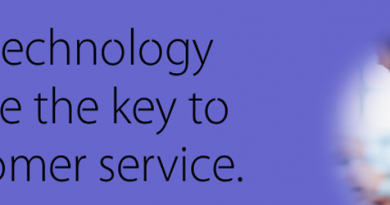Shopping for small business solutions? Tech talk translations for SBOs
As a small business owner, you do it all: the books, marketing, customer service, product, inventory and – oh yes – tech support. In fact, small and microbusiness owners are more likely to shoulder all tech tasks for their firms, according to a study by the National Small Business Association. Yet unless your business is IT, chances are you struggle to speak the language of business technology solutions.
“Small business owners need to be masters of virtually every aspect of their business, but they shouldn’t have to be translators, too,” says Nate Spilker, vice president of cloud services for Citrix. “Technology can help small businesses grow and stay ahead of the competition. Organizations of all sizes need the technology they use to be easy to adopt, improve efficiency, reduce costs and boost productivity, no matter what their industry.”
Microbusiness tech challenges
There are millions microbusinesses (which the Small Business Administration defines as having fewer than nine employees) make up more than 75 percent of all private-sector employers, and provide nearly 11 percent of private sector jobs. Their tech needs are significant, yet 25 percent of microbusiness owners handle all their company’s IT support, according to the report.
Additionally, 60 percent allow employees to telecommute, which can make sharing files and data problematic. Telecommuting employees may save documents and files on local hard drives, rather than centralized locations where others can securely access and collaborate on the documents. What’s more, 57 percent don’t use cloud computing, a technology designed to enhance collaboration.
Technology can help microbusiness owners improve efficiency, reduce and control costs, provide superior customer service and satisfaction, and focus more time on activities that help the business prosper. Stephen L. Nelson, CPA, used Citrix ShareFile to securely, quickly and easily share documents and files with his clients.
Replacing the inefficient method of physically mailing documents with file sharing technology allowed his small team to get more done in less time, reduced the need for physical storage space for paper files, and increased productivity for his firm and his clients. Lowering overhead, paper and office space costs allowed Nelson to grow his business 10 percent.
Talking about solutions
The terminology that describes common tech tools can be mystifying to small business owners. Spilker and the small business technology professionals at Citrix offer explanations of some common terms and tools:
* Digital transformation – Technology is profoundly affecting how companies of all sizes do business. They are moving away from traditional, more labor-intensive processes in favor of digital tools, activities and processes.
* Cloud computing – Instead of storing, managing and processing data on an office computer or local server, cloud computing executes the same functions by using a network of remote servers hosted on the Internet.
* File-sharing – Transferring files or documents via email or ftp servers has drawbacks, including potential security issues, version control challenges and slow speeds. File-sharing technology allows people using different devices to access, edit, change and otherwise use files, documents and other types of data stored in the cloud. Citrix ShareFile, for example, makes it easy for small business teams to securely share files and client data, collaborate on documents and obtain electronic signatures.
* Integrated document workflow – In order to keep work moving, small businesses require the ability to work with documents and move data between multiple kinds of software. For example, an accounting firm needs to be able to take data from W-2s (which might be stored in one format) and move that information to a tax form stored in a different format or “living” in a different system.
* Real time – When hardware or software does its job so quickly – in a matter of miliseconds – the user can immediately take entered data and put it to work.
* File sync – Storing files in multiple locations or having multiple users work with them on different devices can lead to discrepancies between versions. File synchronization technology basically compares these multiple versions to each other and allows users to update all versions with the most current changes, regardless of which user made the changes.
* Cyber security – Criminals who attempt to steal, manipulate, hack or otherwise illegally access a business’ proprietary computer systems and data are cyber criminals. All the steps a business takes to thwart these criminals – including anti-virus software and firewalls – are aspects of cyber security.
“ShareFile has really allowed my firm to digitally transform,” says Nelson. “The addition of automated workflows and secure file-sharing has improved efficiencies, which allows my team to focus our attention on delivering the best client service possible, while ensuring vital company and client data remains safe. Adopting a safe and secure online portal for customer engagement has been essential for delivering on the bottom line.”
(BPT)










